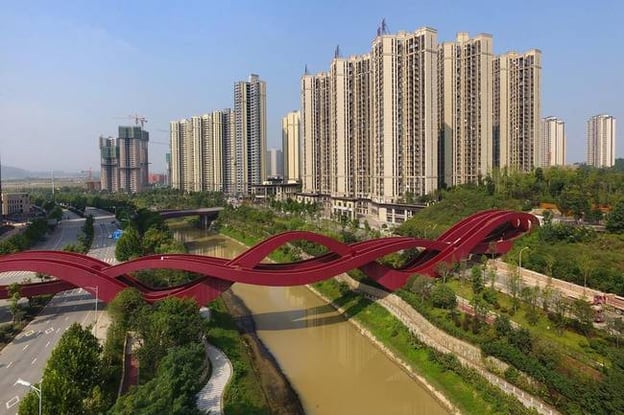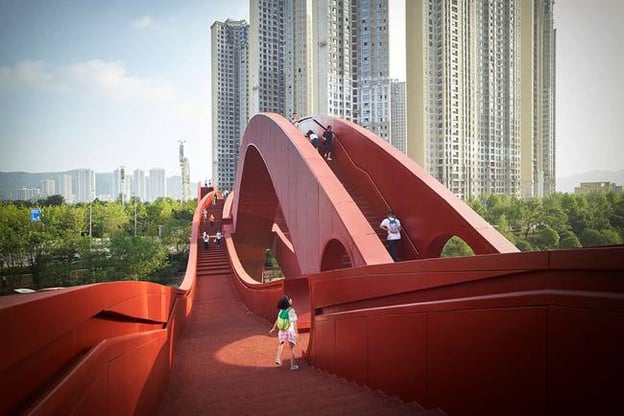
Bridge designers can be placed on a spectrum from engineer to architect to artist. Since most bridges stem from a very practical need, we appreciate when the artistic side has a big impact. More bridge designers are prioritizing the artistic aspects of their designs and are therefore considering many design enhancements. One example is the Amsterdam-based company NEXT Architects. These creative designers are able to develop modern, artistic architectural designs for pedestrian bridges. One of their designs, the Lucky Knot Bridge, is, in our opinion, their most innovative and aesthetic bridge yet.

The Lucky Knot Bridge began when NEXT Architects was asked to participate in a design competition for a pedestrian bridge spanning Changsha, China's Dragon King Harbour River. NEXT's winning design was inspired by the Mobius strip, a surface with one continuous side formed by joining the ends of a rectangular strip after twisting one end through 180 degrees. The designers believe the connecting qualities of the bridge design are metaphorical for the connections between people, places and experiences. The Lucky Knot Bridge is ultimately three bridges that form a single structure, with four different points of access. Michel Schreinemachers, one of NEXT's founders, elaborates on navigating each of the three bridges:
“The bridge overlaps at five connection points. These provide structural support and serve as pathways by which pedestrians can access different routes. To get from one bridge to the next, people can walk through moon gates, the circular passageways used in traditional Chinese garden architecture.”
Not every bridge offers a moon gate! If you've been lucky enough to have crossed the Lucky Knot Bridge, let us know in the comments section below.

